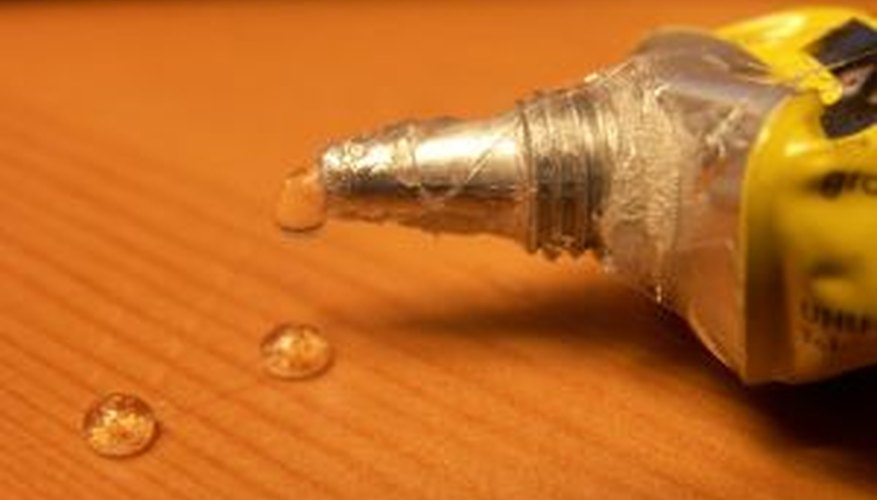Gorilla Glue is popular because it sticks to anything and doesn't let go. This is great when you are using it for a project, but terrible when you get it on your clothes or home decor fabrics. The Gorilla Glue website states that Gorilla Glue cannot be removed from clothes and that it is best to dispose of the soiled items, but with a little elbow grease and persistence, you can remove Gorilla Glue from most fabrics.
Peel or pull off any excess glue that will come off. Be careful not to rip or otherwise damage the fabric as you do this. You may not be able to peel off anything but remove any that you can.
Soak the fabric in acetone. Acetone will loosen the bond between the glue and the fabric. As the fabric soaks, gently try to peel up the glue. If it doesn't come up, soak it a longer and try again. Repeat this process until you have removed all the glue, then wash the fabric with warm, soapy water. Be sure to test a small hidden section of the fabric before soaking it in acetone, as acetone can ruin some fabrics, especially vinyl.
- Gorilla Glue is popular because it sticks to anything and doesn't let go.
- Be sure to test a small hidden section of the fabric before soaking it in acetone, as acetone can ruin some fabrics, especially vinyl.
Try paint thinner or turpentine if the acetone is ineffective. Follow the same method listed in Step 2, also being sure to test a small patch before beginning. Make sure to do this in a well-ventilated area to avoid breathing in fumes. Turpentine has a strong smell that is more difficult to remove than acetone, so take this into account if you are using it on household fabrics, such as a couch upholstery.
Purchase a commercial, industrial-strength glue remover from a hardware store. This will dissolve the glue and make it easy to remove, but may also damage your fabric. Test a section of the fabric to see how the glue remover will affect the treated area.
- Try paint thinner or turpentine if the acetone is ineffective.
- Test a section of the fabric to see how the glue remover will affect the treated area.
Wash your fabrics thoroughly, no matter what method you use, first with soap and warm water, then in the laundry if possible.
TIP
Always use acetone and turpentine in a well-ventilated area.
WARNING
Acetone and turpentine are very flammable. Exercise caution when using them, and avoid breathing in the fumes.
